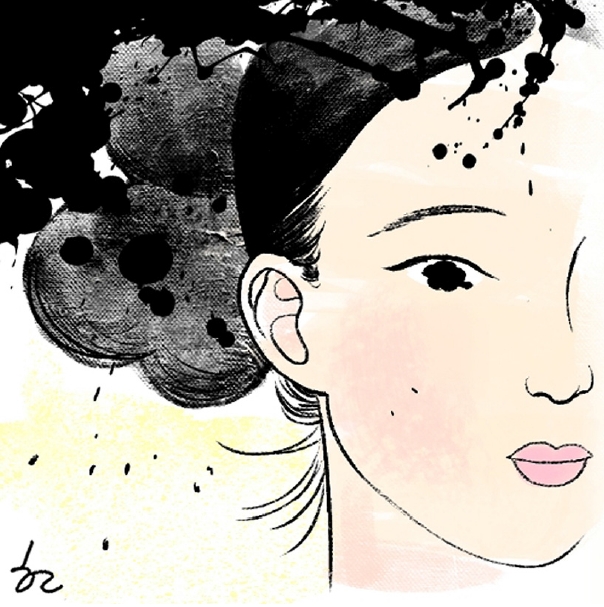 |
 |
- Search
| Arch Aesthetic Plast Surg > Volume 29(4); 2023 > Article |
|
People say that the eyes are the window to the soul. Six muscles control the movement of the human globe. The levator palpebrae, frontalis, and orbicularis oculi are responsible for opening and closing the eyelid. Other periorbital muscles include the corrugator and procerus muscles. Depending on how muscles are coordinated, the eye can appear happy, sad, or frightened. Blepharoptosis patients are often concerned because their eyes look sleepy.
When I perform eyelid surgery, such as levator resection, I recall a short story, “The Mad Painter,” written in 1935 by Kim Dong-in (1900–1951). The plot summary is as follows:
“Solgeo, an artist with a sense of inferiority due to his own ugliness, lived in seclusion deep in the mountains and dreamed of portraying a peerless beauty in his paintings. While looking for a beautiful woman like his mother, who vaguely lingered in his memory as a model, one day he accidentally finds a blind maiden. While telling her about the beauty of the underwater palace of the dragon king, he realizes that her expression conveys the pure beauty he wanted, and begins to draw it on drawing paper. When he is almost finished, leaving only the eyes, he suddenly violates her. The virgin’s pure beauty then disappears, and Solgeo strangles her in anger. In the midst of this, ink splashes and the pupils are stamped on the painting, and the beautiful woman in the painting shows a resentful expression” (Fig. 1) [1].
As seen in “The Mad Painter,” the pupils in the portrait are the starting point where the feeling of life comes alive as the painting is finished. The moment this dot is placed onto the page, the painting comes to life. The life of the model in the portrait begins with the portrait’s eyes. The pupil in the portrait is the moment when painting as imitation and reproduction reaches its limit, the moment when life begins to emerge from the painting, but also the moment when the ironic and paradoxical wonder of instant emptiness and filling that cannot be distinguished simply in the flow of time is achieved. It is the moment when image and reality meet, and through this secret and mysterious moment, the painting is no longer a dead object, but a living person itself [2].
This marks the beginning of the moment when the person in the picture is alive, just as the person in the picture is alive and walking. In addition, the pupil, which is the last stroke of the portrait, is a passage that connects the gap between image and reality and is a point of “betweenness.” In this work, if the portrait before splashing ink symbolizes an image as a representation resembling reality, the painting splashed with ink now becomes an act of revealing life, an act of making it visible. The portrayal of the pupil is a moment of qualitative change. The dot on the pupil bridges the impossible gap between painting and life. The dot is the decisive point that connects turbulent change [3].
Pupils become the final stroke of a painting from a temporal standpoint, and if they become the starting moment of life, they become a boundary and a passage that connects two areas where life and painting, image and reality cannot coexist. This point is also a dynamic action and event that mediates between the two and changes between the two different essences. It reminds us of the fact that one element contains the opposite element in the phenomenon where the opposite element is filled up as soon as one element is completely emptied [4].
In blepharoptosis surgery, when the levator aponeurosis is shortened and sutured at upper border of the tarsal plate, the drooping eyes vanish and new beautiful shining eyes appear. At this moment, the patient’s new life is beginning, just like the completion of a portrait by the final stroke of painting the pupils. As when painting a portrait, the position of the upper eyelid and the exposure of the pupil is extremely important in eyelid surgery.
CONFLICTS OF INTEREST
Kun Hwang is an editorial board member of the journal but was not involved in the peer reviewer selection, evaluation, or decision process of this article. No other potential conflicts of interest relevant to this article were reported.
Fig. 1.
Ink splashes and the pupils are stamped on the painting in “The Mad Painter,” written by Kim Dong-in [1]. Available from:
http://news.kmib.co.kr/article/view.asp?arcid=0924013934&code=23111512&cp=nv.

REFERENCES
1. Han SI. A mad painter’s love and hate [Internet]. Kukminilbo; 2018 Oct 3 [cited 2023 Sep 21]. Available from: http://news.kmib.co.kr/article/view.asp?arcid=0924013934&code=23111512&cp=nv
3. Triki R. L’image: Ce que l’on voit, ce que l’on crée (Philosopher). Larousse; 2008.
4. Cheng F. Vide et plein: Le langage pictural chinois. Points; 1991.







